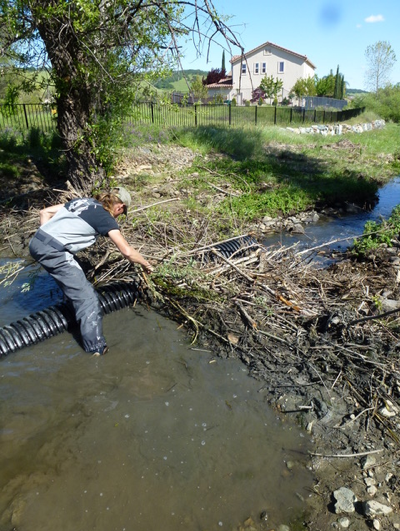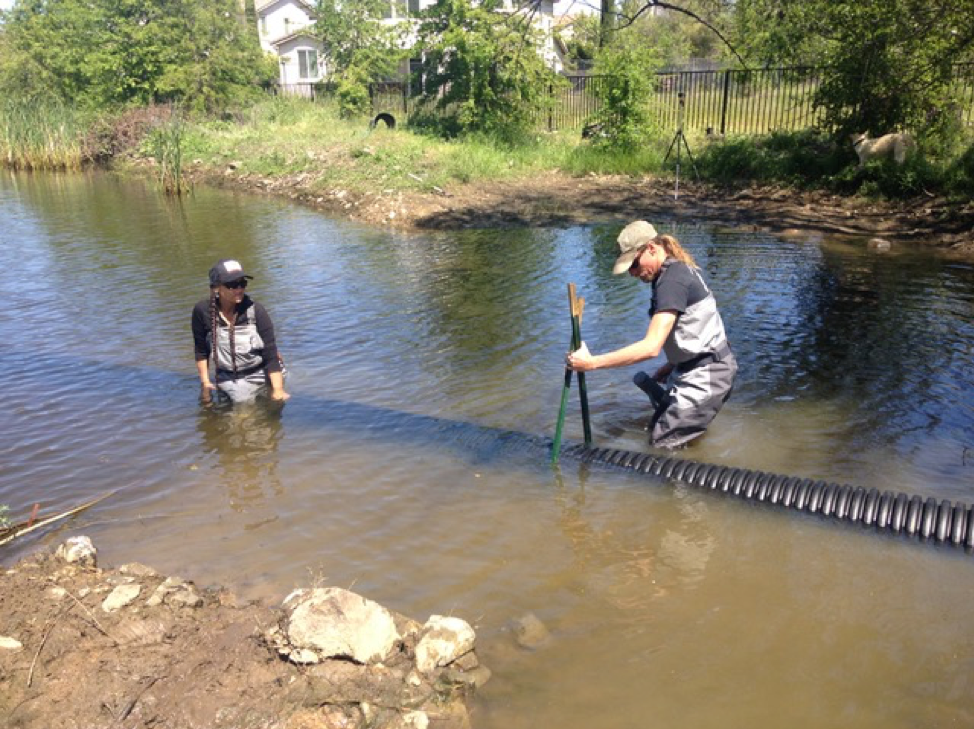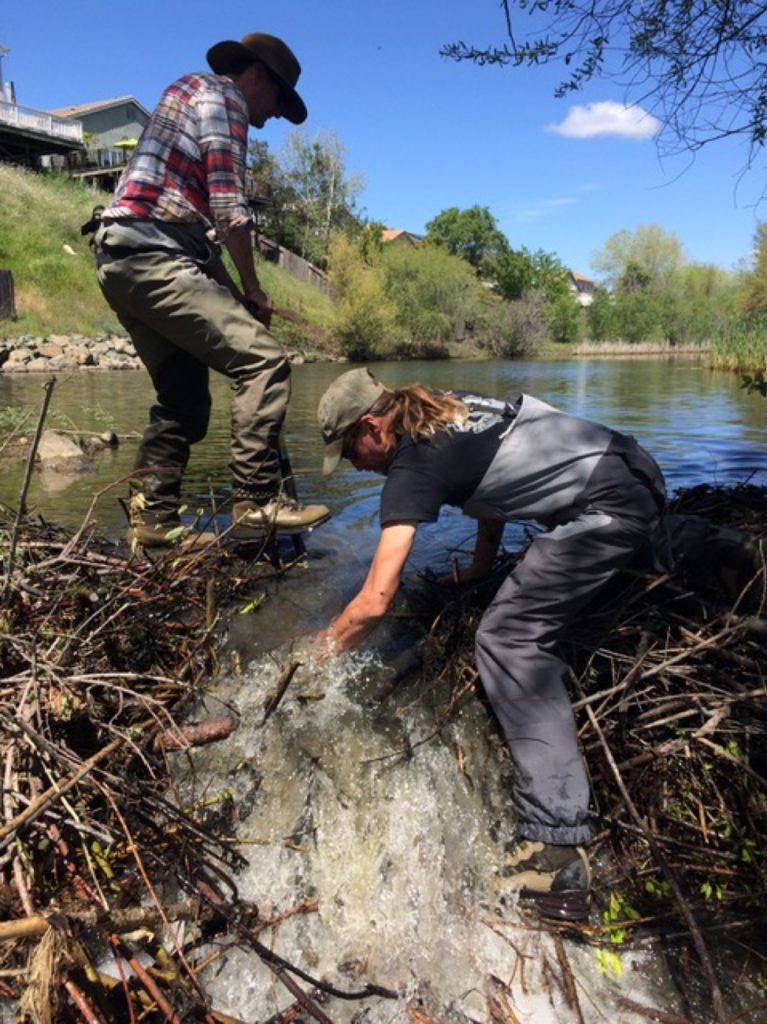
2018-present
In 2018, the American Rivers Conservancy (ARC) contacted the WATER Institute about helping with a particular beaver issue in the Creekside Greens neighborhood of the El Dorado Hills. Beaver had been building a dam in the creek and it was starting to flood a popular greenbelt walking path. They wanted to know if there was a non-lethal alternative to kill trapping. The answer is YES! Learn what we did …

El Dorado Hills, California Gives Beaver Co-Existence A Chance
For nearly a decade, the Occidental Arts and Ecology Center WATER Institute has been running a Bring Back the Beaver campaign to educate landowners and agencies about the importance of our native beaver to increasing biodiversity and improving watershed health. If this is news to you, check out their downloadable booklet Beaver In California: Creating a Culture of Stewardship.
In addition to beaver restoration education, research and advocacy, WATER Institute staff work tirelessly to provide resource agencies and property owners with low-cost strategies to prevent damage without giving up the potential benefits of keeping beaver around.
The community of El Dorado Hills, California has been grappling with beaver issues for many years now and often resorts to killing the beaver. This has proven to be a temporary fix and has stirred up some controversy as not all neighbors approve of this strategy.
In 2018, the American Rivers Conservancy (ARC) contacted the WATER Institute about helping with a particular beaver issue in the Creekside Greens neighborhood. Beaver had been building a dam in the creek and it was starting to flood a popular greenbelt walking path. They wanted to know if there was a non-lethal alternative to kill trapping.
The ARC was interested in addressing the flooding while keeping the beaver in place as the pond was providing habitat for a wide array of birds, amphibians, reptiles, mammals and other native Sierra foothill species. This got the attention of the US Fish and Wildlife Service who offered to foot the bill if the responsible landowner (in this case the El Dorado Hills Community Services District) would agree to give permission for the installation.
WATER Institute staff invited long-time partner and beaver co-existence specialist, Kevin Swift (www.swiftwaterdesign.com) to get involved and the team conducted a site visit. It turns out that this site was a good candidate for installing what is often called a “pond leveler device.” This is simply a big pipe that gets put through the dam to lower the height of the pond. This device provides a win-win solution where the humans get to stop the flooding and the beaver and all the other wildlife get to stick around.

WATER Institute Director Kate Lundquist and Kevin Swift of Swift Water Design laying pipe for the pond leveler device.
The Community Services District gave the project the green light and the device was successfully installed. Subsequent visits had revealed that the device is working very well. Next steps are to install some protective fencing around the trees near the dam to prevent the beaver from chewing them down. If you would like to volunteer for this effort in April of 2019, please contact the American Rivers Conservancy.
The WATER Institute would like to thank Elena Delacy (ARC), Damion Ciotti and Jared McKee (US Fish and Wildlife Service) and to Phil Stamborsky (Eldorado Hills Community Services District) and Christine Morris (Creekside Greens resident) for supporting this project.

Damion Ciotti of US Fish and Wildlife Service with Kevin Swift creating a small, temporary space in the dam to insert the pond leveler pipe. Photo: Kate Lundquist/OAEC





